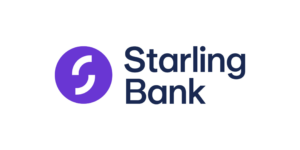Case study: Starling Bank
State of Open: The UK in 2021
Phase Two: “UK Adoption”

 Steve Newson, Chief Technology Officer
Steve Newson, Chief Technology Officer
Synopsis
Starling is a leading digital challenger bank disrupting financial services and Open Banking has been at the heart of its success, with it’s entire infrastructure based on open source software. Having open API’s allows a space to play around in and test before legal and procurement get involved, making it quicker and easier to make crucial developments. Starling Bank’s ethos places value in their staff over the software, arguing that your intellectual property is in your staff rather than in your software, “it’s the engineers that built that thing and the people that you really need to value.” Lastly, the fact their whole infrastructure is based on open source software is a big driver for investors because it reduces the per customer incremental costs.
7.1 Starling Bank: Expanding the role of open source
In conversation with Steve Newson, Chief Technology Officer
Starling is a leading digital challenger bank disrupting financial services. It has grown exponentially in the last few years with deposits now running in excess of £6bn from more than 2 million accounts and receiving a total investment of £322 million32 in 2021 with a £1.1bn valuation pre-money. Open Banking has been at the heart of Starling’s success. For clarity, Open Banking has opened up data between banks and was mandated by MIFID regulation in the banking sector. It enables customer choice and the ability to move banks simply.
Starling Bank’s entire infrastructure is based on open source software.
‘Standing on the shoulders of giants’: The origins of ‘Build with Starling’
Finding out what the API is when dealing with an integration to another bank or third party can be a cause of frustration, especially if they are proprietary. There are few sandbox environments to test in, as well as legal restrictions (for example NDA’s) which make communicating difficult and slow down the whole process.
Having open API’s as a consequence of Open Banking has changed all of that Steve explains: “One of the great things about open source and about having open API’s is ‘standing on the shoulders of giants’. The only way I can develop software these days is because there’s 40 or 50 odd years of software development that has gone on before that, that I am benefiting from along with all the tooling and everything else that has built up to this.”
That’s where ‘Build with Starling’ comes in. It’s a differentiator. If you’re a developer with a Starling account, or a registered Third-Party Provider, then you can build something with Starling’s API’s. Used to run the bank, they go beyond industry standards and allow their customers to securely share their data. Developers can use their sandbox to play around and see how it behaves, saving time and paving the way for future interactions. Steve notes that “when it comes to wanting to integrate later on, it’s all just there.”
The benefts of having open API’s
Providing ‘Build with Starling’ as a service to all their customers has meant that anyone who wants to integrate with it (providing they have the technical ability to) can.
Importantly, it allows a space to engage and test before legal and procurement get involved. It makes things more efficient. Steve says, “The reality is if you get legal involved at the start then that cripples most projects because they’re just waiting for legal to go through all the fine details of the contract”. This way, when it gets to the point where legal are involved in contracts, the work is done and that understanding speeds things up. From Steve’s perspective “you’ve got more of a case…we’ve already demonstrated this thing works, we’ve actually got this thing integrated. We’re just waiting on you now. The terms are in there”.
This ability to kick the tyres of open source software by taking the code freely into an organisation on an open source licence, without the need for a procurement or legal process, has been a game changer for open source software over the last decade, and is key to its success today. Proprietary code simply cannot compete with this.
Starling is also very open about their usage of API’s and how it helps their customers.
The ethos of Starling Bank: care less about intellectual property and more about the staff
“In an organisation,” Steve explains, “your intellectual property is not in your source code. Your intellectual property is not in your software. Your intellectual property is in your staff”. Even if Starling’s source code was taken and handed to somebody else it would be useless to them without the staff. It’s the staff that have an inherent understanding of how the code binds together and how it works. In Steve’s opinion the intellectual property in the software itself is just a mechanism by which you integrate your systems. You make money through other mechanisms and services, not the software intellectual property. Starling’s ethos is, “by being the most open and the most accessible, you will get more clients and you’ll ultimately get more money coming in”.
Some larger organisations can fall into the trap of wanting to use open source but consider everything built internally as proprietary and think that where they make their money is embedded in the “super-secret software” itself. Steve disagrees and thinks their perspective needs to shift. He argues that, “it’s the engineers that built that thing and the people that you really need to value.”
Securing investment: the power of open
The fact that Starling’s whole infrastructure is built on open source software is a big driver for investors – in fact Steve says that, “generally speaking they actually like [it] better [than proprietary]”.
One reason is because it reduces the per customer incremental costs. Proprietary software licences generally mean that somewhere down the line there’s a third party that you share a licence with and that you have to pay more money to them as your customers increase. Open source software means licensing royalties for software don’t cut into the long-term profitability of the organisation.
Double the number of customers and your costs don’t double! Steve says, “they don’t even go up by any particular factor…you’re almost flat”.
Starling has 2.3 million customers, and their costs are about the same as they were a year, to a year and a half ago. Investors focus on that, and rightly so. Its significance cannot be understated. Starling’s series D funding round and valuation are testimony to that.
